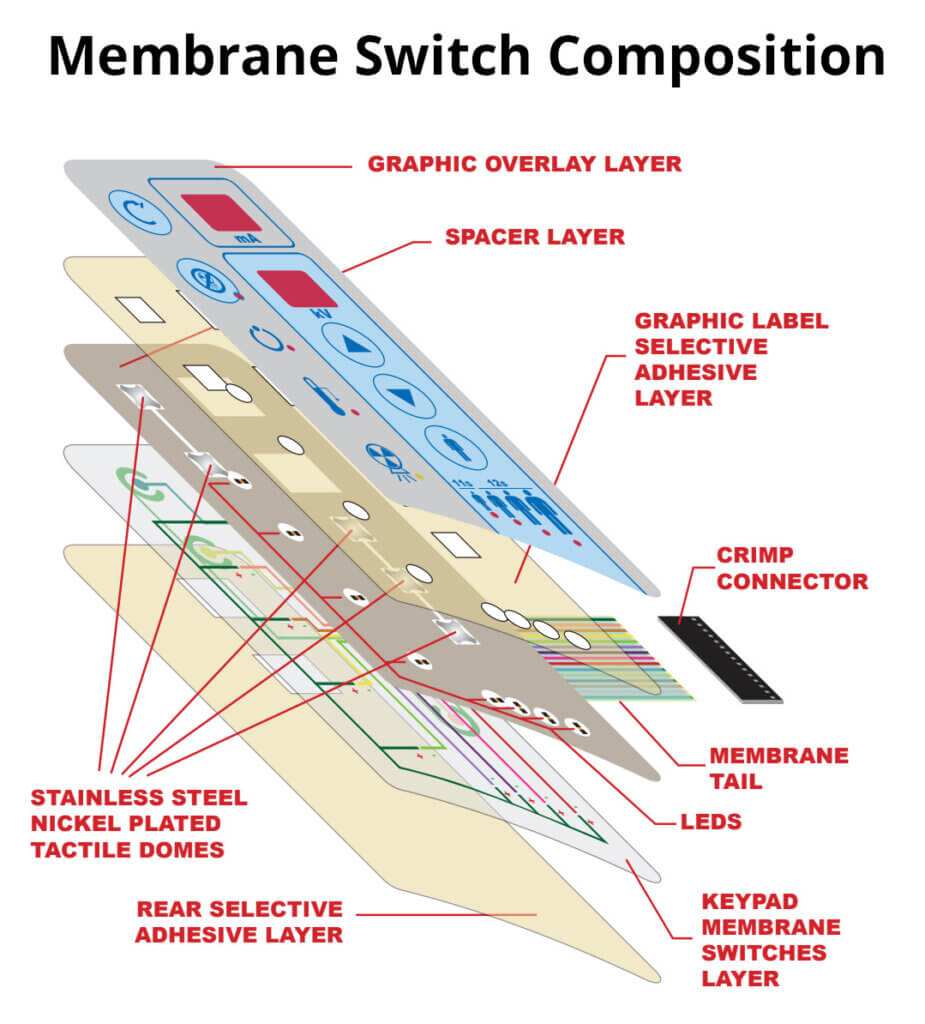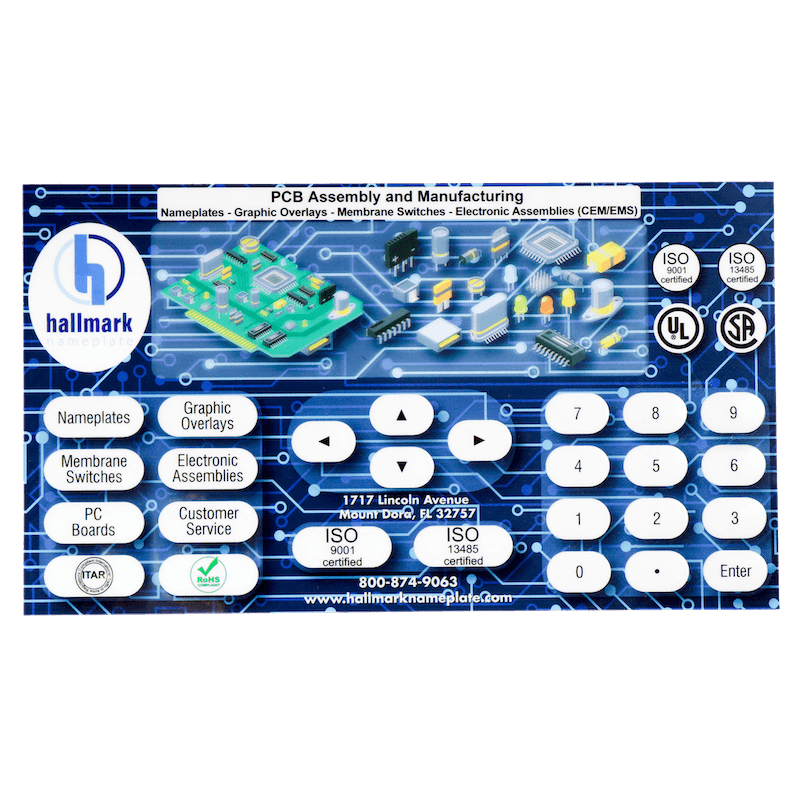Membrane Switch: Reliable, Cost-Effective, and User-Friendly Control Systems
Membrane Switch: Reliable, Cost-Effective, and User-Friendly Control Systems
Blog Article
The Advantages of Utilizing Membrane Switches Over in Consumer Electronic Devices
Membrane layer switches are significantly acknowledged for their significant benefits in customer electronic devices, specifically in enhancing customer communication and improving manufacturing processes. The adaptability in layout enables for customized remedies that satisfy diverse customer demands.
Boosted Individual Experience

In today's competitive landscape of customer electronics, boosted user experience is paramount; almost 85% of individuals prioritize instinctive interfaces. Membrane switches over play an essential duty in attaining this degree of functionality.
The tactile feedback supplied by membrane layer buttons is crucial for leading user activities, making certain that commands are registered precisely. This feedback mechanism minimizes errors and increases user contentment, promoting a favorable connection between the user and the device. In addition, the personalized nature of membrane switches over permits makers to customize interfaces to particular individual demands, making tools much more obtainable and inviting.
Additionally, membrane buttons can integrate backlighting and visuals overlays, even more enhancing presence and usability in varied settings. This versatility guarantees that gadgets continue to be useful and straightforward, regardless of the setting. In general, the assimilation of membrane layer switches right into customer electronics significantly enhances customer experience, driving brand loyalty and complete satisfaction in a progressively open market.
Cost-efficient Manufacturing
Consumer electronics makers are frequently seeking methods to stabilize high quality with cost, and membrane switches provide a compelling solution for cost-effective manufacturing. These components are inherently less complex than typical mechanical switches, which reduces both manufacturing prices and complexity. The lightweight style of membrane switches permits for lower shipping expenses and easier assimilation right into compact devices, further boosting their charm in a competitive market.
Producers can create membrane layer switches in high quantities, capitalizing on economies of range. This automation capability ensures constant high quality while dramatically reducing per-unit costs. Furthermore, the products made use of in membrane buttons, such as polyester and polycarbonate, are typically cheaper than those needed for conventional button innovations, contributing to total cost financial savings.
The manufacturing procedure for membrane layer switches commonly needs less steps and less labor compared to various other switch kinds. This structured strategy not only conserves on labor expenses but likewise accelerates time-to-market, enabling business to respond quickly to customer demand. As a result, the mix of reduced product expenditures and efficient production processes positions membrane changes as a clever financial investment for manufacturers intending to deliver top notch consumer electronic devices at competitive cost factors.

Style Versatility and Customization
While standard mechanical buttons typically impose limitations on style as a result of their bulk and needed installing mechanisms, membrane buttons provide unequaled versatility and customization choices for customer electronics. This ingenious modern technology permits developers to create smooth, inconspicuous user interfaces that can effortlessly incorporate right into various product aesthetic appeals, from smartphones to kitchen area home appliances.
Membrane layer buttons can be created in basically any type of shape or dimension, making it possible for manufacturers to tailor the design to specific ergonomic and useful requirements. This adaptability not only improves customer experience yet also allows for artistic styles that straighten with brand name identification. The usage of printed graphics on membrane switches supplies the possibility for vivid colors and intricate layouts, which can be quickly customized without considerable cost implications.
Additionally, membrane buttons can include numerous performances into a single layer, decreasing the need for several elements and streamlining assembly procedures. This structured design approach reduces space and weight, making it optimal for small consumer electronic devices. Generally, the design adaptability and customization abilities of membrane layer changes equip makers to introduce, ultimately causing more straightforward and engaging items.
Toughness and Reliability
As technology continues to advance, the resilience and reliability of membrane layer switches have ended up being essential factors to consider for manufacturers in the customer electronics industry (membrane switch). Membrane layer switches are created to withstand harsh ecological my sources conditions, consisting of temperature level variations, dampness, and dust exposure. Their robust building and construction often includes multi-layered materials that provide an efficient barrier versus impurities, guaranteeing longevity and regular performance

Additionally, membrane layer buttons can withstand a significant variety of actuations without loss of capability, typically going beyond numerous cycles. This resilience equates to lower substitute costs and decreased downtime for consumers and producers alike. In general, the combination of environmental durability and mechanical dependability makes membrane changes a tactical option for customer electronics, making sure that devices stay functional and efficient throughout their intended life-span.
Streamlined Item Advancement
The resilience and integrity of membrane switches over significantly add to streamlined item development in the customer electronics market. By incorporating these switches early in the design process, producers can lower the complexity and number of components required in their items (membrane switch). Membrane buttons are compact and light-weight, enabling more efficient space application within devices, which can result in simplified setting up procedures
Moreover, the personalization abilities of membrane buttons make it possible for designers to customize functions especially to customer demands without sustaining extreme Web Site expenses or delays. This versatility promotes technology, as companies can rapidly iterate styles based upon market responses, eventually accelerating the time-to-market for brand-new products.
The simplicity of making membrane switches likewise plays a vital role in product development. With contemporary printing methods and materials, manufacturing can be scaled successfully, lowering and decreasing lead times waste. This causes lower manufacturing expenses, boosting general earnings.
Conclusion
In conclusion, membrane switches substantially boost consumer electronics by supplying an enhanced individual experience, economical production processes, and versatile design options. The this integration of membrane changes stands for a critical option for suppliers looking for to enhance product style and efficiency.
Membrane buttons are progressively acknowledged for their considerable advantages in consumer electronics, specifically in improving individual interaction and improving production procedures. Furthermore, the materials used in membrane layer buttons, such as polyester and polycarbonate, are commonly less expensive than those required for conventional button innovations, contributing to overall price financial savings.
The production process for membrane layer changes usually requires less actions and less labor contrasted to other button kinds. Unlike typical mechanical buttons, which may put on out over time, membrane layer switches make use of a covered layout that reduces the danger of mechanical failing.In final thought, membrane layer changes dramatically enhance consumer electronics by giving a boosted user experience, cost-effective production procedures, and flexible style options.
Report this page